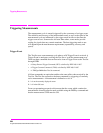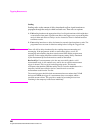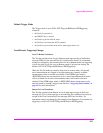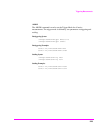
225
Triggering Measurements
Trigger Modes
The Trigger Mode is defined by two parameters: retriggering and settling.
Retriggering
Retriggering refers to what a measurement does once it has completed a
measurement cycle. There are two options:
1. Single retriggering causes the measurement cycle to stop once a valid measurement
result has been obtained. A valid trigger command must be received to start the
measurement again. When a measurement cycle is completed, the values for all active
measurements are held until another trigger command is received. This allows the
control program to query a group of measurements that were triggered at the same time.
This is the same functionality as the front-panel HOLD function.
When the trigger mode is set to single retriggering, consecutive queries of the same
measurement (with no intervening trigger event) will return the same value.
Measurements that rely on external signals or hardware-generated events (such as the
DTMF Decoder) must be re-armed with a new trigger command before another
measurement can be made.
2. Repetitive retriggering causes the measurement cycle to immediately start over once a
valid measurement result has been obtained. No trigger event must be received to start
the measurement again. Repetitive retriggering will cause measurements that rely on
external signals or hardware generated events (such as the DTMF Decoder) to be
re-armed upon completion of a measurement cycle (a valid measurement result has
been obtained ). When the trigger mode is set to repetitive retriggering, consecutive
queries of the same measurement return new measured values.
NOTE: If a measurement cycle does not successfully obtain a valid measurement result,
it will continue to try until it does or the measurement trigger is aborted. This is
true for both retriggering modes.


















